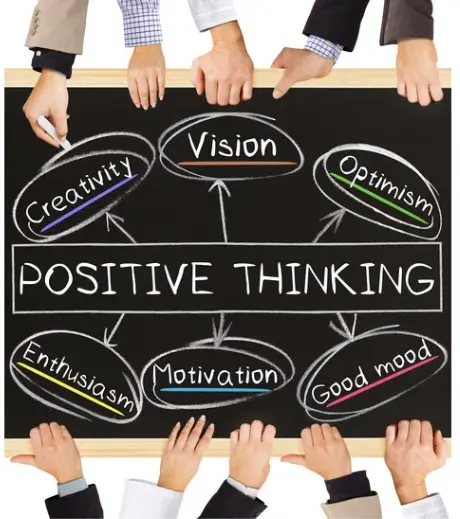Transforming Mindsets for Success and Happiness
“Once you replace negative thoughts with positive ones, you’ll start having positive results.”
Willie Nelson
In a world where stress and challenges loom large, the power of positive thinking emerges as a vital tool for mental wellness and life satisfaction. This guide delves deep into the psychological foundations and practical applications of adopting a positive mindset, offering readers a roadmap to overhaul their thought processes and leverage positivity for enhancing their personal and professional lives.
Understanding Positive Thinking
Definition and Scope:
- Positive thinking involves focusing on the good aspects of any situation, expecting positive outcomes, and approaching life’s challenges with a positive mindset. It does not necessarily mean avoiding or ignoring the bad; instead, it involves making the most of the potentially bad situations, trying to see the best in other people, and viewing yourself and your abilities in a positive light.
Psychological Basis:
- Research in the field of positive psychology has shown that positive thinking can lead to numerous benefits including greater life satisfaction, increased resilience, better health, and reduced stress.

Principles of Positive Thinking
Core Concepts:
- Optimism: Expecting the world to be kind and hopeful, which motivates proactive behaviors.
- Gratitude: Regularly acknowledging good things in life, which shifts focus away from negativity.
- Mindfulness: Living in the moment and appreciating the present, reducing the emphasis on past troubles or future worries.
Techniques to Foster Positive Thinking
Cognitive Behavioral Strategies:
- Thought Challenging: Identify and challenge negative thoughts to transform them into neutral or positive ones.
- Visualization: Practice envisioning successful outcomes to foster a sense of internal motivation and positive expectation.
Environmental Influences:
- Social Connections: Surround yourself with positive influences and people who uplift and support you.
- Information Diet: Consume media and content that enhance your mood and avoid those that sap your energy or promote negativity.

Daily Practices:
- Journaling: Write down positive thoughts and affirmations daily to cultivate a habit of positivity.
- Acts of Kindness: Engaging in altruistic behaviors can boost mood and foster a positive outlook.
Integrating Positive Thinking into Daily Life
In the Workplace:
- Positive Affirmations: Start workdays with affirmations or positive statements about your abilities and goals.
- Constructive Feedback: Focus on giving and receiving feedback in a way that is constructive and uplifting, rather than critical and demoralizing.

In Personal Development:
- Goal Setting: Set realistic, achievable goals with a positive framework. Celebrate small victories to maintain motivation.
- Resilience Building: Use positive thinking to reinterpret failures and setbacks as opportunities for learning and growth.
Challenges to Positive Thinking
Overcoming Pessimism:
- Recognizing Patterns: Be aware of and actively monitor pessimistic thoughts that can sabotage positive thinking.
- Seek Professional Help: If negative thinking is deep-rooted and impacts life quality, considering therapy can help reframe cognitive patterns.
The Role of Technology in Promoting Positive Thinking
Digital Tools and Resources:
- Apps for Mental Health: Use apps designed to promote positive thinking through mindfulness exercises, mood tracking, and cognitive-behavioral therapy techniques.
- Online Communities: Participate in online forums and social media groups that focus on personal development and positive life changes.

In conclusion, embracing positive thinking can significantly transform your outlook on life, influencing both your mental and physical health. By understanding and applying the strategies outlined, individuals can not only enhance their own well-being but also positively impact those around them. As we continue to navigate a complex world, the ability to maintain a positive mindset will be a key driver of success, resilience, and happiness.


